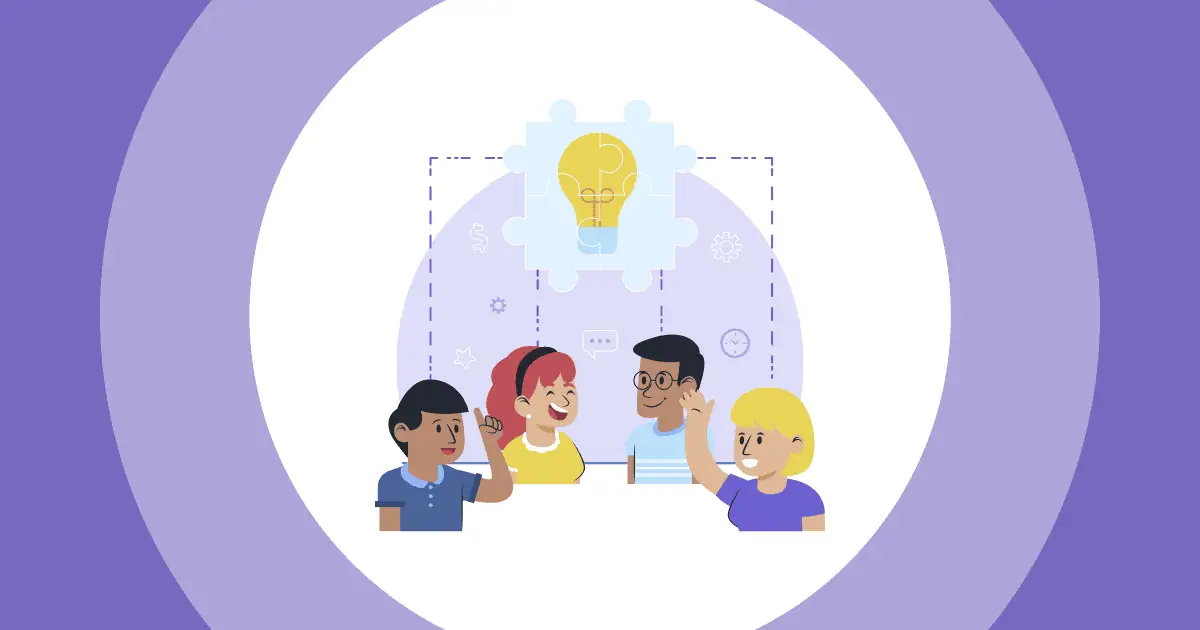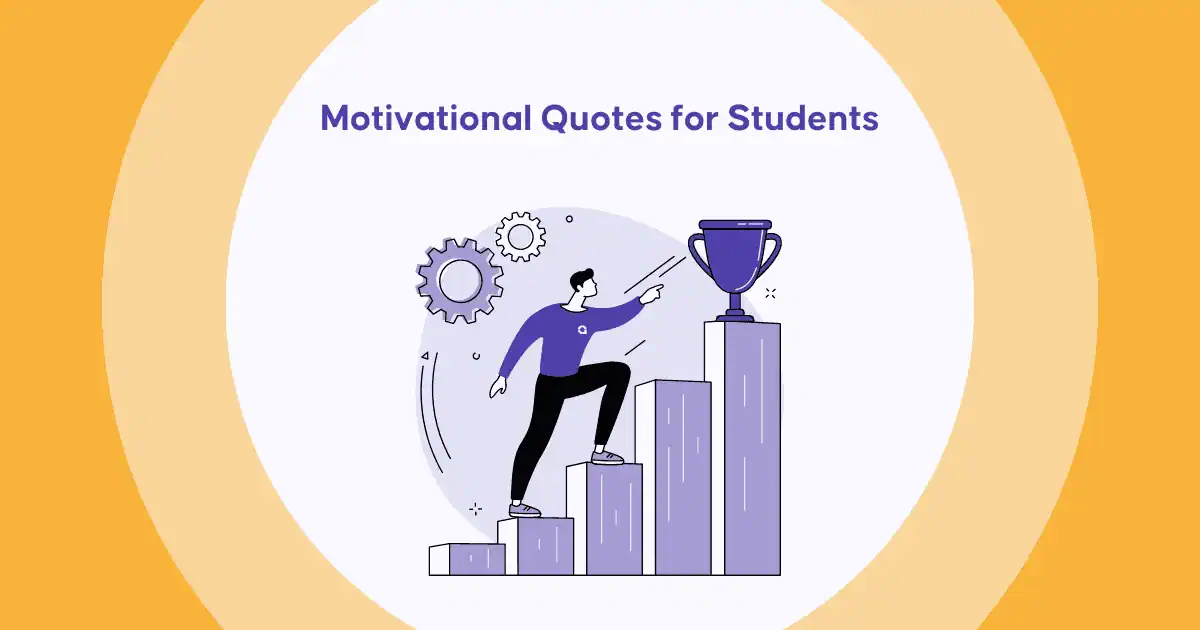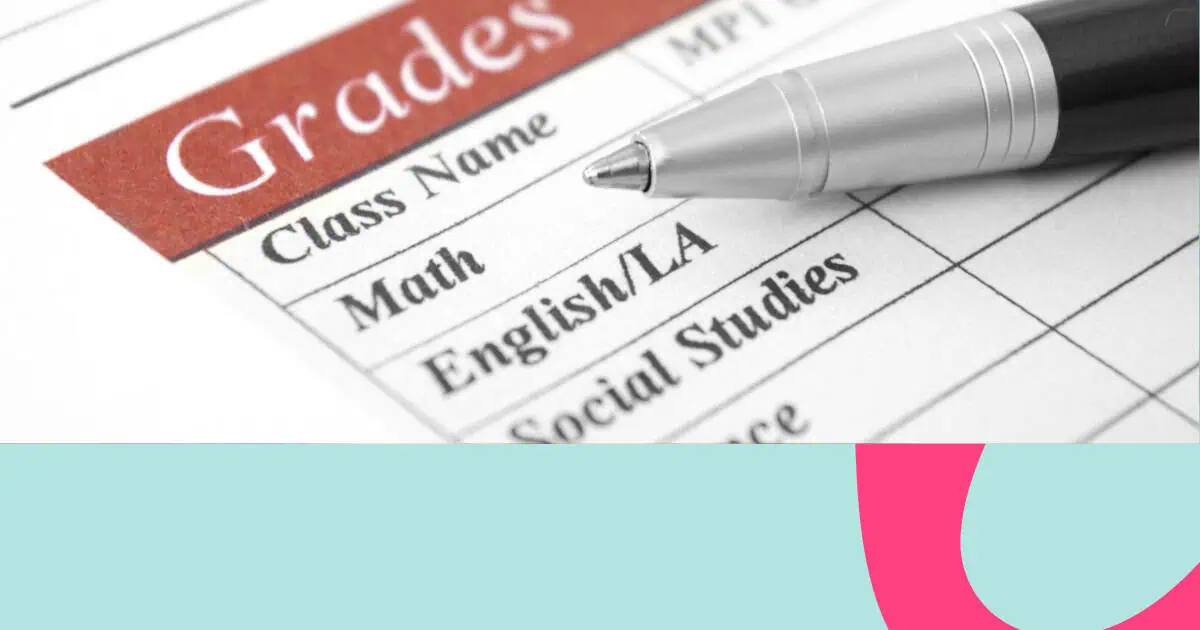A research by the Mind Mapping Software Blog found that mind mapping may increase productivity by an average of 23%
As a student in today's fast-paced digital world, it can be challenging to keep up with the vast amounts of information covered in classes, lectures, and textbooks. Cramming facts and figures using traditional study methods like summarizing or re-reading notes often falls short. Students need tools that align with how their brains naturally absorb and retain information. This is where mind mapping comes in.
Mind mapping is a visualization technique that can help students organize information in a way that boosts memory, comprehension, and creativity. This article will cover everything you need to know about mind maps - what they are, how they work, and 15 excellent mind map ideas for students to unlock their full academic potential. We'll also provide tips to create optimal mind maps as well as templates and tools to get you started.
Read on to learn how this brain-friendly approach to studying, planning, and organizing can be a game-changer for students of all ages and majors. With some simple mind map ideas, you can master any subject or topic with creativity and ease.
Table of Contents
- What is a Mind Map?
- How to Use Mind Maps for Students
- Why Mind Mapping is Beneficial for Students?
- 15 Best Mind Map Ideas for Students
What is a Mind Map and How to Use It?
A mind map is a diagram that displays information visually using labels, keywords, colors, and imagery. The information radiates out from a central concept in a nonlinear way, like the branches of a tree. Mind maps were popularized in the 1970s by British psychologist Tony Buzan.
The structure of a mind map leverages the way your brain naturally makes associations. Rather than jotting down information linearly, mind maps allow you to organize key facts and details visually in a format that’s easier to remember. A mind map can replace pages of handwritten or typed notes with a colorful one-page diagram.
How to Use Mind Maps for Students
To create and use a basic mind map effectively, follow these steps:
- Place your main topic or idea in the center of the page. Make it stand out with large, bold letters and colors.
- Draw branch lines radiating out from the central topic to represent the main ideas or categories related to the topic.
- Add information on each branch relating to the main idea using keywords or short phrases. Color code branches for clearer organization.
- Further, develop ideas by drawing "twigs" - smaller branches with more details stemming from the larger branches.
- Get creative by incorporating meaningful imagery, symbols, and visuals throughout the mind map. This stimulates your brain's memory centers.
- When making a mind map, keep things clear by sticking to keywords and brief phrases. Use color coding so branches that relate to the same subtopic have the same color.
💡 Mind mapping by hand with paper and colored pens is a classic approach, but digital mind mapping tools give you more ability to revise and expand your maps.
Why Mind Mapping is Beneficial for Students?
There are many evidence-backed reasons why mind mapping should be part of every student's learning toolkit:
- Improves memorization & comprehension: Research shows mind mapping can improve memory retention and recall by up to 15% over conventional note-taking. Visual organization and color stimulation aid the brain.
- Enhances creativity & critical thinking: The flexibility of mind maps lets you see relationships between concepts, allowing for deeper understanding. This bolsters critical thinking.
- Aligns with the brain's natural processes: The mind-mapping structure mirrors the brain's natural way of making semantic associations. This makes info easier to learn.
- Provides a visual representation of connections: A mind map provides an at-a-glance view of how different elements relate, improving comprehension.
- More engaging than traditional notes: Mind maps engage your brain's visual centers, keeping you interested and motivated to learn.
- Mind mapping gives you a versatile, visual workspace to assimilate information from lectures, textbooks, or independent learning more efficiently. The benefits are backed by decades of research on learning methods. Students who use mind mapping perform better academically.
15 Popular Mind Map Ideas for Students
Mind maps are incredibly versatile for a wide range of student uses. Here are 15 examples of mind maps you can utilize to maximize your success:
1. Brainstorming Ideas
Mind maps are a great technique for providing visual structure to organize streams of thoughts. A brainstorming mind map is a quick and rational way to get their innovative juices and thinking caps flowing. Instead of struggling with a jumble of ideas, graphic organizers from mind maps help to organize the flow of thoughts.
2. Taking Notes in Class
Creating a mind map for each lesson is also one of the great mind map ideas for students. It can benefit students as it saves time during review. It is simple to do so: replace linear notes with mind maps organizing key topics, theories, and details into a memorable and appealing format.
3. Planning Team Projects
Using mind maps to delegate tasks, set timelines, and track project progress when working in groups sounds great mind map ideas for students. It offers effective communication and promotes a clear understanding of responsibilities within the group. This leads to effectiveness in time management and reduces team conflicts.

4. Creating Presentation Visuals
Need more mind map ideas for students? Let's make it a part of the presentation. This makes your presentation look more engaging & thought-provoking which is beyond boring bullet points. At the same time, other classmates find it easier to understand what you are talking about if it is a complex concept or simply be attracted to your colorful and smart visuals.
5. Outlining Essays
You are familiar with the outline of your essay with bullet points, it is time to change to a more effective want. Mapping out the structure of essays visually to see connections between ideas can be one of the great mind map ideas for students to practice daily, which enhances their writing skills when time is limited.
6. Organizing Semester Schedule
How to make the new semester more effective? Here comes a new way of using mind mapping for students - asking them to organize their semester schedule with a mind map. With a mind map, you can get an at-a-glance view of all your courses, tests, projects, and deadlines for the term in minutes. It can save you time and help you balance your life between learning, hobbies, and socializing with friends and family.
7. Understanding Complex Theories
Learning theory is hard for students, but it is an old story. Now, this assumption changes because students can learn by breaking down challenging theoretical concepts into digestible pieces and relationships. Mind map ideas for students in this case: Utilizing the mind map to identify the main components of a theory and write the interconnection among them Each major branch can represent a core concept, and sub-branches can break down the components further.
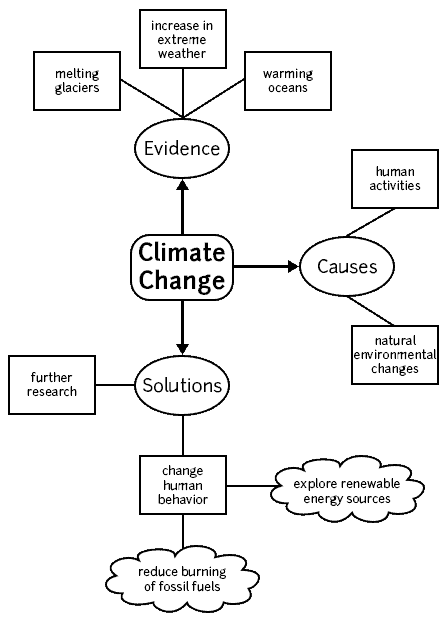
8. Writing Science Lab Reports
Do you know that writing science lab reports with diagrams and graphics is highly effective in conveying experimental procedures and results? Visually mapping hypotheses, experiments, results, and conclusions by using a mind map structure is recommended. Learning science is never boring again.
9. Learning a New Language
Learning a foreign language is a nightmare for many students. If you think you can absorb it, you're wrong. You can try to use mind mapping to make your language learning easier and more interesting. The idea is simply to prepare some colored pens, draw some rectangles, and link grammar rules, vocabulary lists, and example sentences in engaging mind maps to accelerate learning.
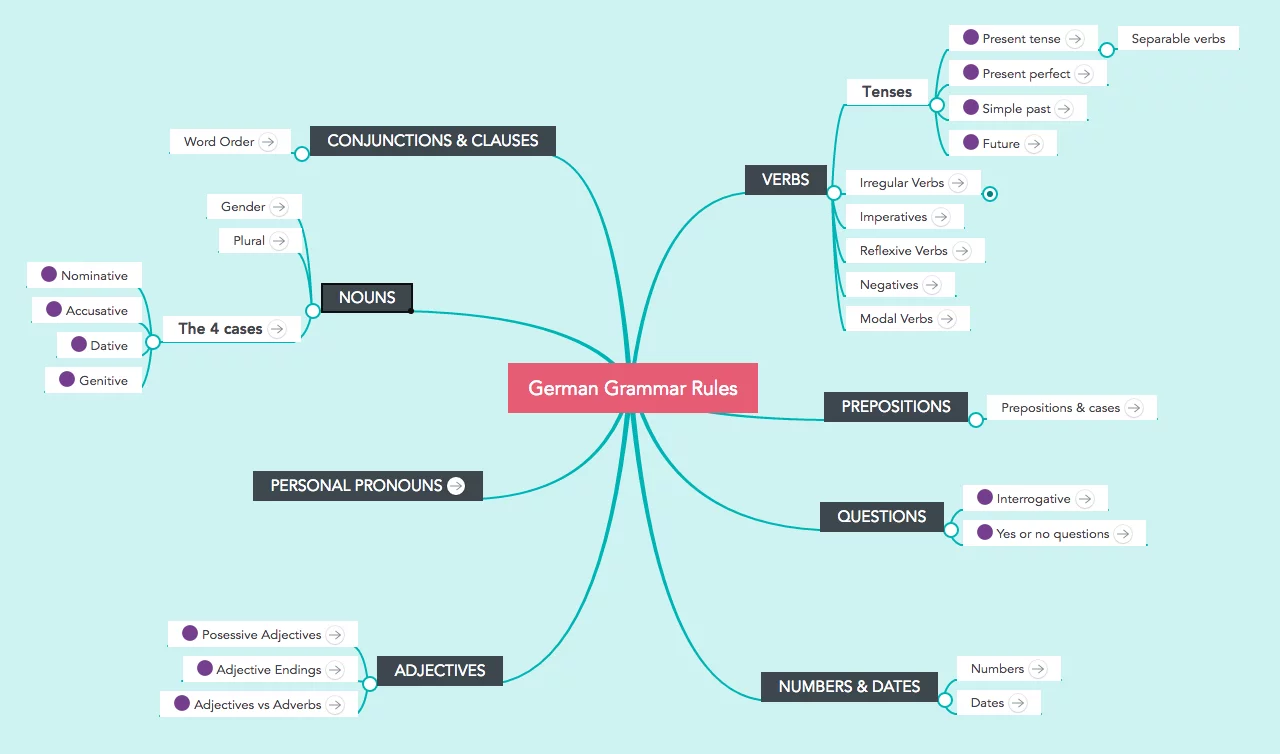
10. Preparing for Exams
When it comes to exam season, students get frustrated. Especially when there are too many subjects or courses to complete in a short period, while some might fall, many get high scores. You will be surprised if you know these students use mind maps for exam revisions. If you are still wondering how it works, is it really as effective as I said, everything in the book " I am gifted, so are you:! of Adam Khoo.
Other Easy Mind Map Ideas for Students
- 11. Planning Academic Research: Map out the research's outline, such as topic, literature reviews, sources of data collection, research method, case studies, implications, anticipated results, and applications before doing research.
- 12. Scheduling Extracurriculars: Keep track of sports, clubs, hobbies, volunteering, and social commitments on one page. It can reduce the overwhelming feeling when dealing with too many things while time is limited.
- 13. Organizing Events: It is better to plan committees, budgets, schedules, promotions, and logistics for school events, dances, or fundraisers before implementing them.
- 14. Managing Time: Create weekly or monthly mind map calendars to schedule priorities, assignments, goals, and responsibilities that might take you some hours. Believe it or not, it won't take you as much time as you thought, but instead, save your future time.
- 15. Designing a School Yearbook: Map out pages, photos, captions, and anecdotes for an organized, creative yearbook creation process. This daunting task has become more thrilling than ever.
Bottom Lines
Mind mapping is clearly an invaluable asset for any student looking to boost academic performance, unlock creativity, improve time management, and allow information to stick long-term. Make mind mapping a habit, and you are guaranteed to maximize your potential as a student.
Ref: MindMeister | Zenflowchart


